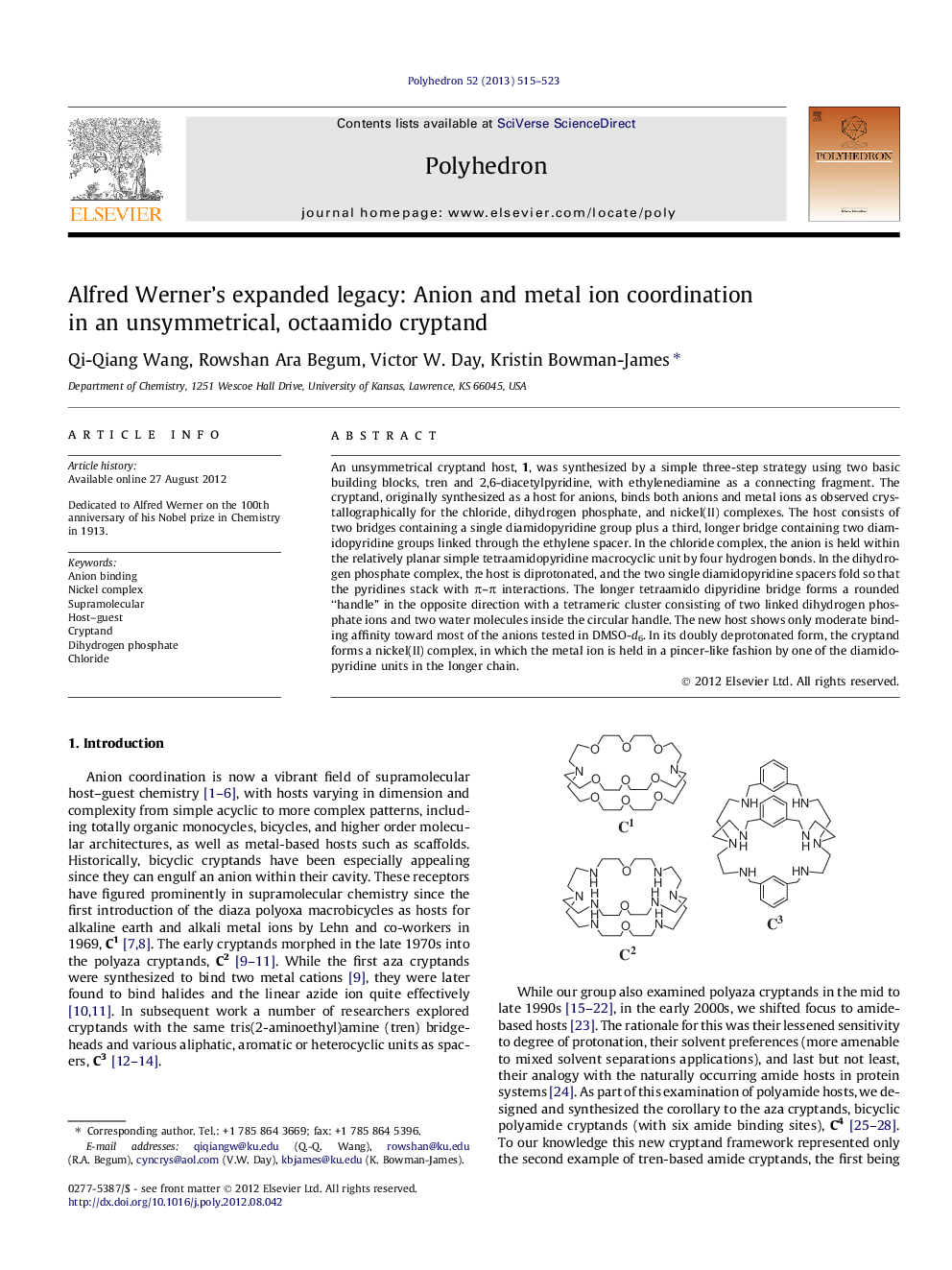| کد مقاله | کد نشریه | سال انتشار | مقاله انگلیسی | نسخه تمام متن |
|---|---|---|---|---|
| 1336978 | 1500287 | 2013 | 9 صفحه PDF | دانلود رایگان |

An unsymmetrical cryptand host, 1, was synthesized by a simple three-step strategy using two basic building blocks, tren and 2,6-diacetylpyridine, with ethylenediamine as a connecting fragment. The cryptand, originally synthesized as a host for anions, binds both anions and metal ions as observed crystallographically for the chloride, dihydrogen phosphate, and nickel(II) complexes. The host consists of two bridges containing a single diamidopyridine group plus a third, longer bridge containing two diamidopyridine groups linked through the ethylene spacer. In the chloride complex, the anion is held within the relatively planar simple tetraamidopyridine macrocyclic unit by four hydrogen bonds. In the dihydrogen phosphate complex, the host is diprotonated, and the two single diamidopyridine spacers fold so that the pyridines stack with π–π interactions. The longer tetraamido dipyridine bridge forms a rounded “handle” in the opposite direction with a tetrameric cluster consisting of two linked dihydrogen phosphate ions and two water molecules inside the circular handle. The new host shows only moderate binding affinity toward most of the anions tested in DMSO-d6. In its doubly deprotonated form, the cryptand forms a nickel(II) complex, in which the metal ion is held in a pincer-like fashion by one of the diamidopyridine units in the longer chain.
An expanded polyamide cryptand host, 1, with an elongated spacer was synthesized by a three-step strategy. The bicyclic host binds both anions and a single nickel(II) by simple changes in its conformation. Chloride ion is held within the two smaller chains, each containing a single pyridine, while dihydrogen phosphate and nickel(II) are bound within the larger chain containing two amidopyridine units. While binding anions with only moderate strength, the isolation of both anion and metal ion complexes within the same ligand framework points to the universality of the dual valence concept of Werner’s coordination chemistry.Figure optionsDownload as PowerPoint slide
Journal: Polyhedron - Volume 52, 22 March 2013, Pages 515–523